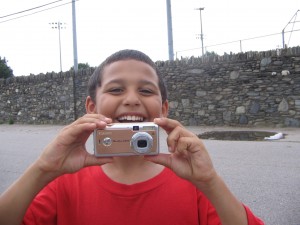Community Appearance: Opportunities in the Inner City

Originally appears in the Fall 2007 issue
…people who have a lot of opportunity, the affluent, love to hear about this big crisis. Oh my god, global warming, we’re all going to die. For people who have a lot of crisis already, they don’t want to hear about another big crisis. They’ve got sick parents, no health care… they don’t want to hear about it. For people with a bunch of opportunity, you tell them about the crisis. For people with a bunch of crisis, you tell about the opportunities.” — Van Jones, Ella Baker Center for Human Rights1
Imagine 1.2 square miles densely populated by 19,000 people, with few high-rise buildings, little green space, and zoning that allows for industrial businesses in residential areas and adjacent to schools. Now imagine that this community has a higher than average percentage of households with children and the lowest median income and highest high school dropout rate in the state. Picture this town surrounded on three sides by industrial dumping grounds that separate it from some of the wealthier communities in the state and on the fourth side by another densely populated mixed-use underemployed community, and you will begin to understand the urban landscape of Central Falls, Rhode Island. Due to converging social, economic and environmental factors, the mostly Hispanic young people in this urban area are at particular risk.
Was there any hope for an environment-based after-school program here, I wondered, or is environmental education really just for suburban kids who have the luxury to care? As middle and high school students poured into the lunchroom after school, I wondered if it was possible to help connect these kids to their “place,” to the natural world, to the resources they depend upon for life. My 12-week contract was to spend two and a half hours each Friday afternoon helping 12 to 15 students to develop as environmental leaders. What I learned was that urban landscapes can provide city kids rich opportunities to connect with the world around them in ways that inspire pride in their community as well as a desire to improve it. I also learned that students in voluntary after-school programs can be motivated by the same tools and methods that produce higher-order thinking, environmental consciousness and civic engagement in the classroom; that freed from some of the standards and testing constraints of the classroom, such programs can provide unique opportunities for highly engaged transformative learning.
This content is restricted to subscribers only.
If you are not yet a subscriber, please consider taking out a subscription here.
If you are an existing subscriber, kindly log in or contact us at info@greenteacher.com for more information.










